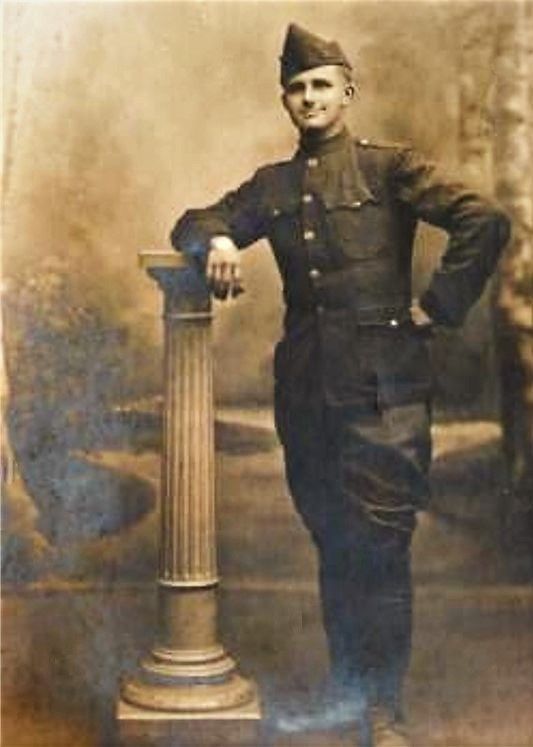Monuments
26th Division Tablets of the Fallen (WW1)
ISOB John G. Bekaert - 26th Infantry Division, WW1

In Eke, Belgium on 9 December 1897, August and Ida (Desmet) Bekaert welcomed the birth of their second son, whom they christened Juan Geerart Bekaert. His brother César, was born one year earlier.
Twelve years later, in 1909, August immigrated to America, and established himself in Charlestown, Massachusetts, which today is part of Boston. In 1911, he sent for his wife and two sons to join him in America. Juan was fourteen years old at the time, but it appears that he embraced life in America. He soon changed his name to John, and by the time he was 20, John was working as a printer in Massachusetts.
In the Spring of 1917, it became increasingly clear that America was going to enter the First World War. John decided to volunteer for the Massachusetts National Guard, enlisting on 27 March 1917. That was less than a week before President Wilson would ask Congress for a declaration of war against Germany.
John was originally assigned to the Massachusetts National Guard's Supply Company. However, he soon transferred to Company A of the 5th Infantry Regiment. In July of 1917, the Massachusetts National Guard was called into Federal Service, and John's regiment was re-designated the 101st Infantry Regiment of the 26th Infantry Division. The 26th Infantry Division was nicknamed the "Yankee Division? since it consisted principally of National Guard units from the New England states.
The Yankee Division left for France on 21 September 1917, becoming the second American army infantry division to arrive in France. During that autumn and early winter, the Division was in Neufchâteau, France where it underwent training with experienced French forces. In February of 1918, the Yankee Division was put on the front lines in the Chemin des Dames sector in support of the French forces. At that moment in the war, this sector was considered to be a relatively quite area of the Western Front. However, no sector of the Western Front in WWI was ever truly quiet, and the Germans did make a few efforts to break through the 28th Division's lines while it was there. In April of 1918, the Yankee Division was sent to relieve the American 2nd Division near St. Mihiel. This movement occurred in the midst of the Kaiserschlacht, the last great German offensive during the war. Again, their job was to hold the line, and again the Yankee Division repulsed several German attacks.
From that point forward, the Yankee Division went on the offensive. It participated in the American Army's Chateau-Thierry (Aisne-Marne) campaign. From there, it was sent back to St. Mihiel as a part of the American Army's St. Mihiel offensive. Finally, it fought in the Meuse Argonne campaign, the largest battle in American military history, and the last major offensive of World War I.
As a part of this latter offensive, on 23 October 1918, John's regiment was sent to capture Hill 360. It attacked the hill that was called that the soldiers called Houppy Wood. John was fatally wounded in this attack, and died of his wounds the next day. He was buried in the Glorieux French Military Cemetery.
Following the war, the US Army wrote to John's parents to ask if they wanted his remains to be repatriated or to be buried in one on the American cemeteries that were then being created across Western Europe. Since John was unmarried, his father was supposed to have been the person to make that decision under the laws in force at the time. However, by 1921, John's father had deserted the family and his mother Ida was living in East Tampa, Florida. At least at that moment in time, she believed that she was going to return to Belgium. So, she asked the Army to send John's remains to her brother Pierre Desmet, who was living in Ghent.
On 1 April 1922, Pierre received the body of his nephew in Ghent, together with an American flag. He buried him in the Campo Santo Cemetery, in Sint-Amandsberg. John lies in perpetual rest in a historic section of the cemetery, that is protected under Belgian law.
Incidentally, John's brother César returned to Belgium during the war in order to join the Belgian Army in the IJser (Yser) sector of Belgium. César served in the 2nd Carabiniers of the 8th Line Infantry Regiment. In 1919 he was on occupation duty in Germany. However, César had returned to America by 1920 when he was living with his mother Ida. It is not known what happened to Ida, César, or August after 1921.
Source:AOMDA Foundation
